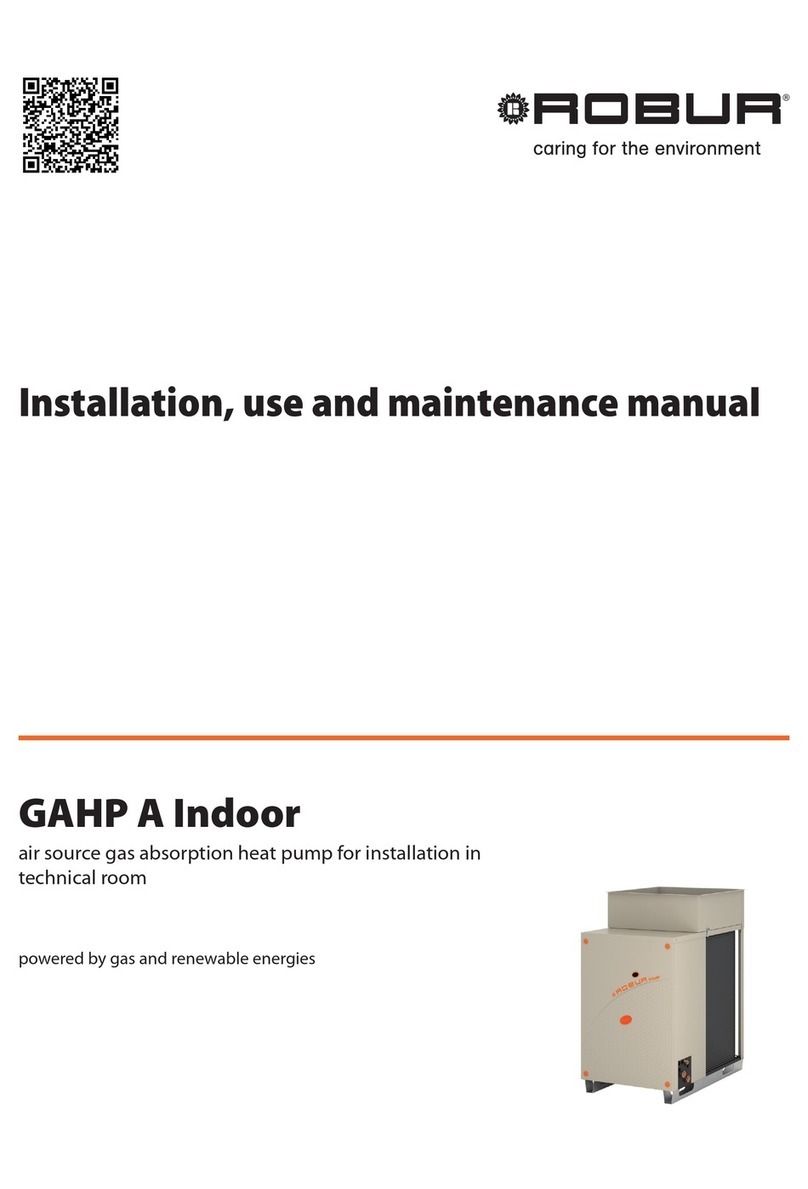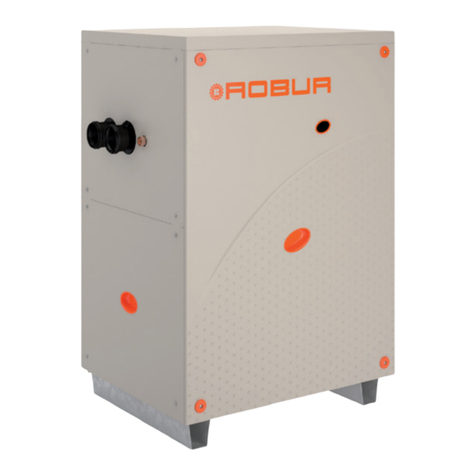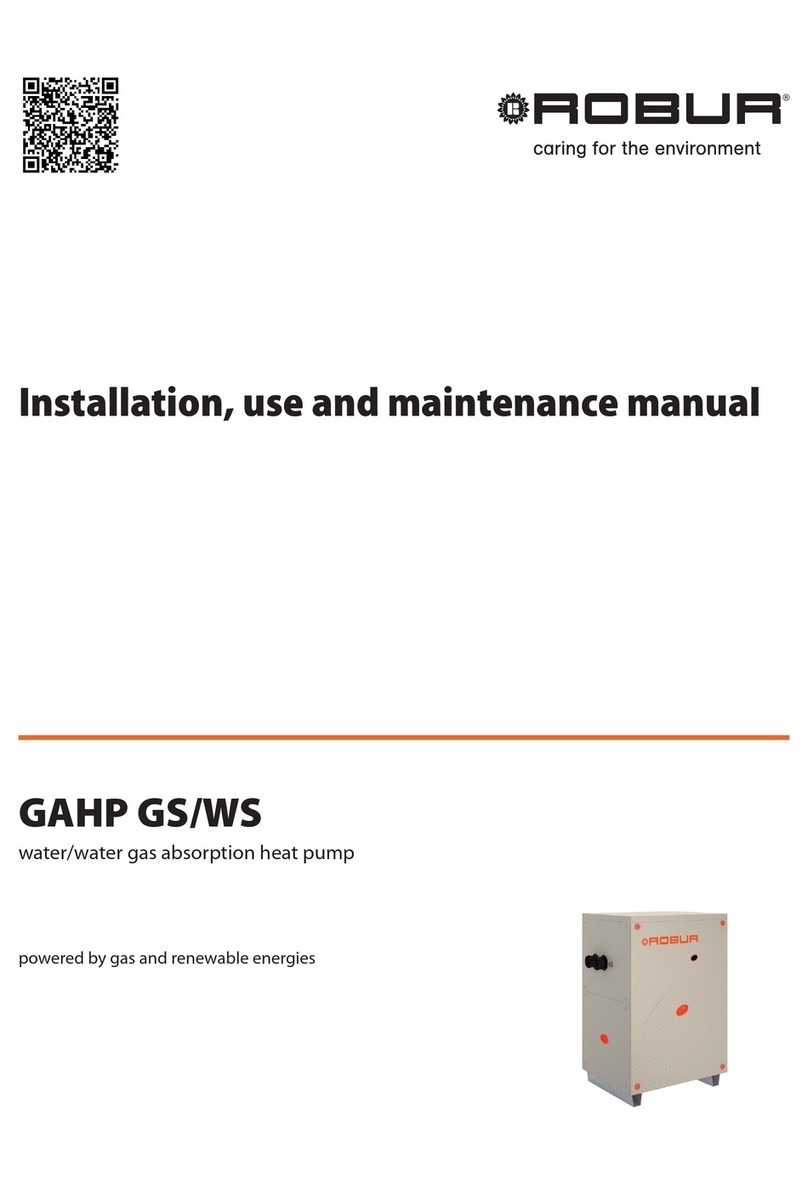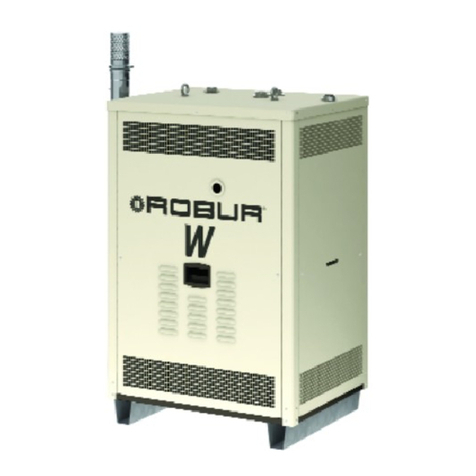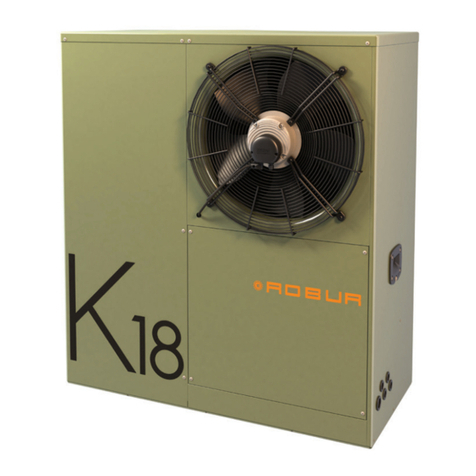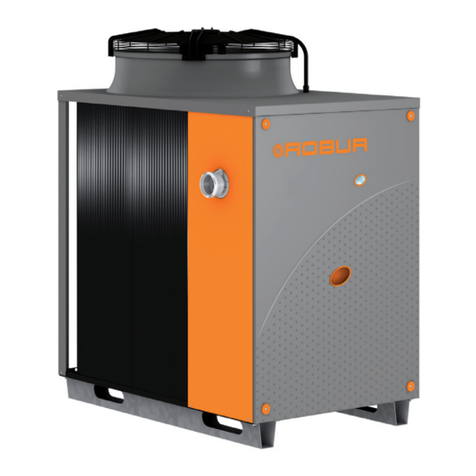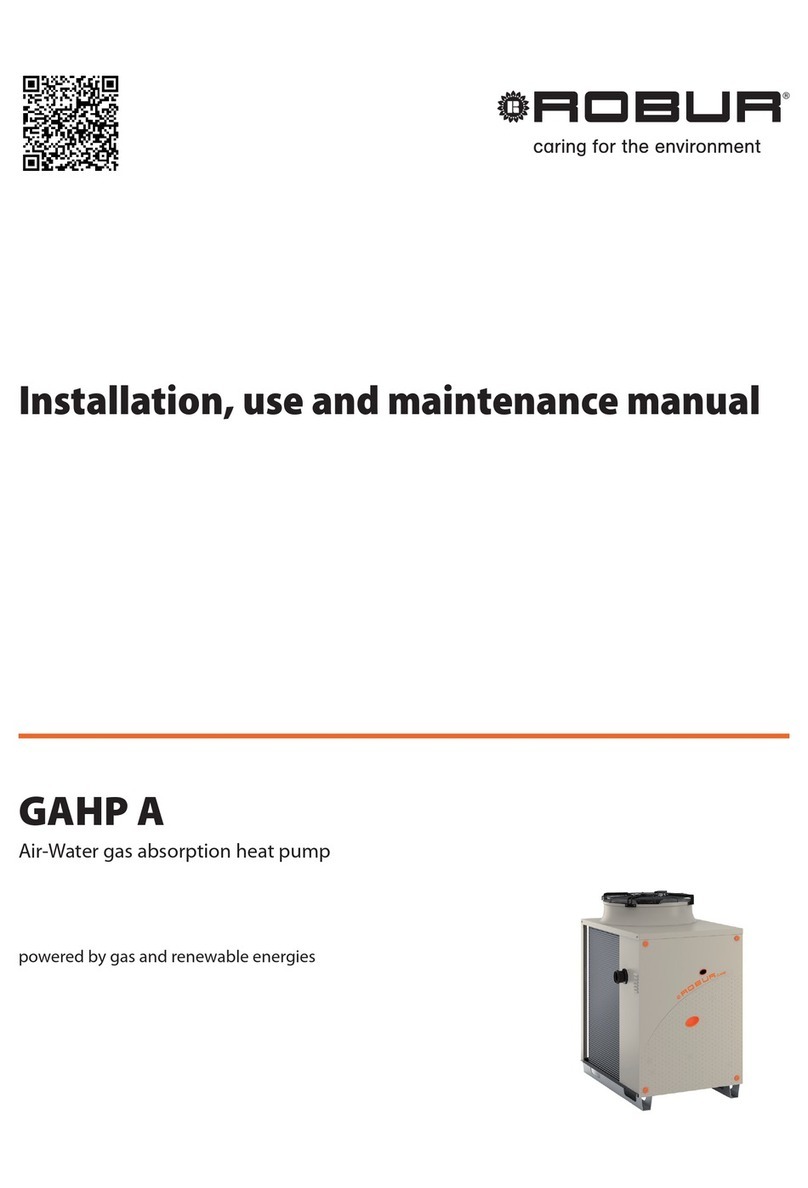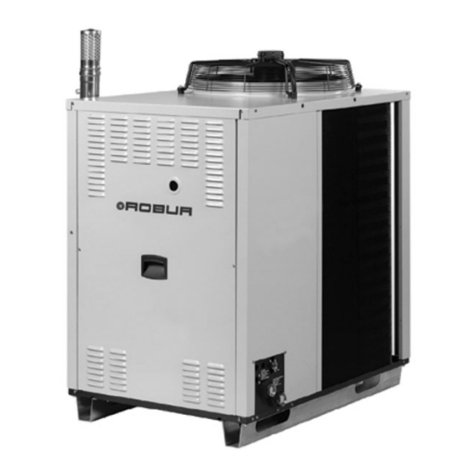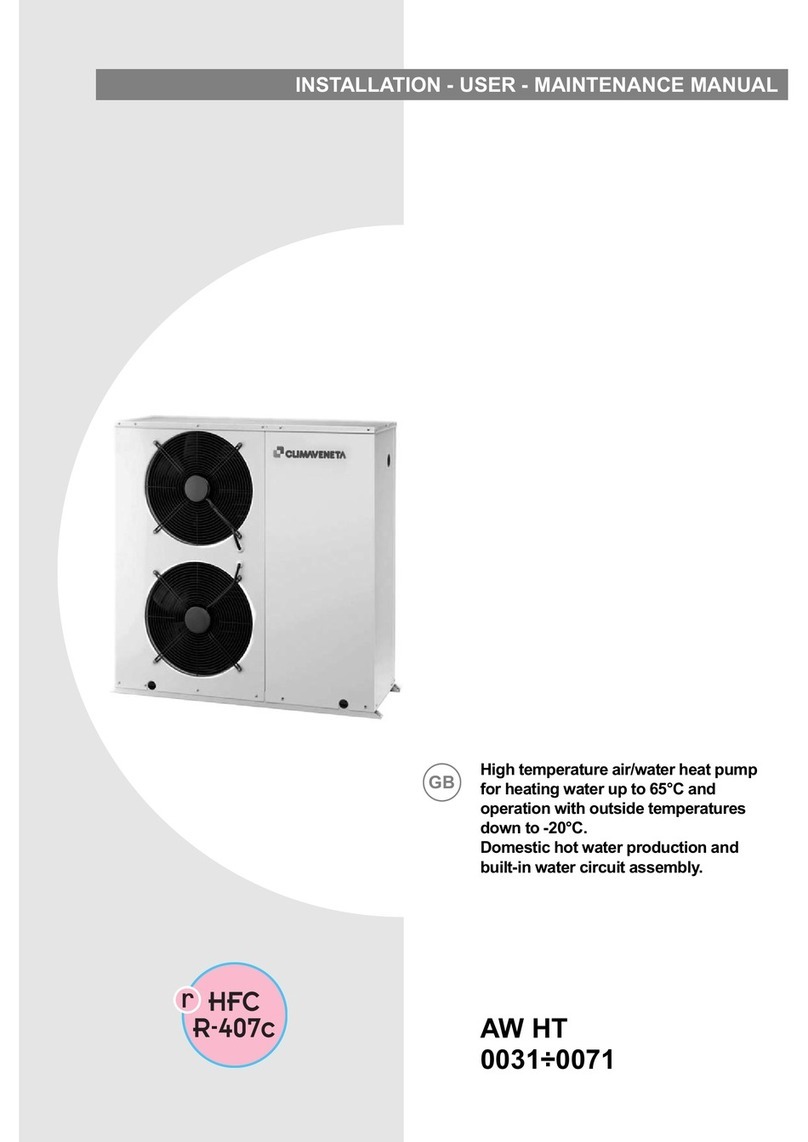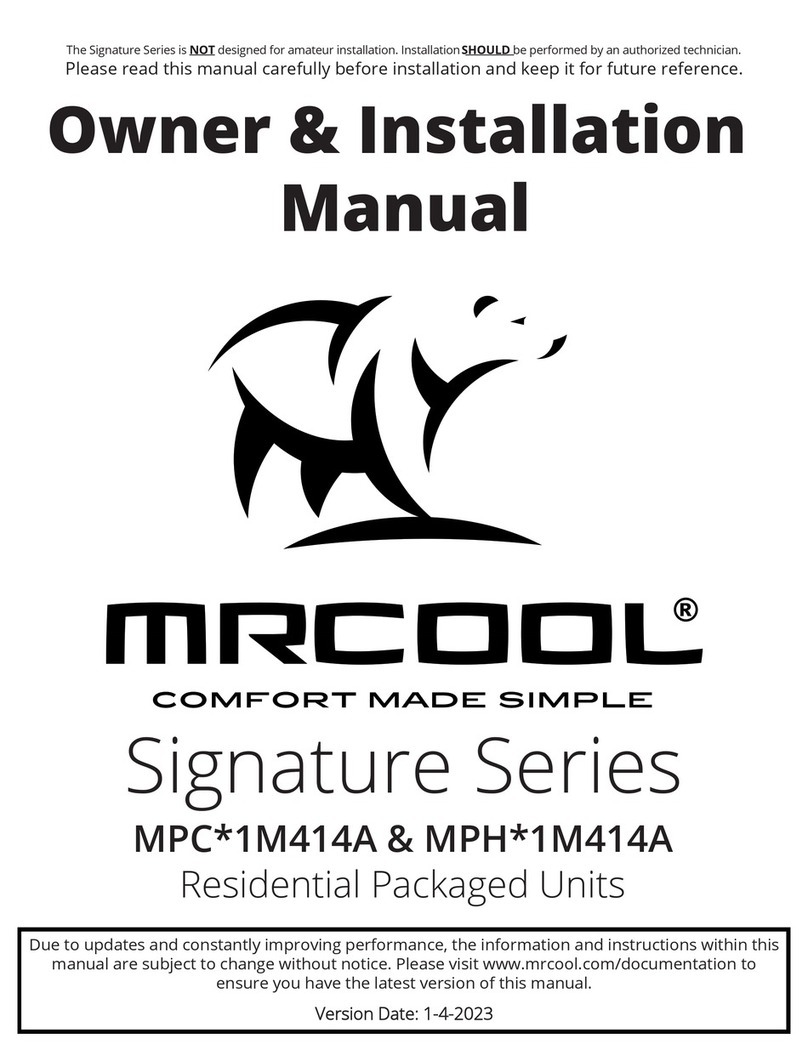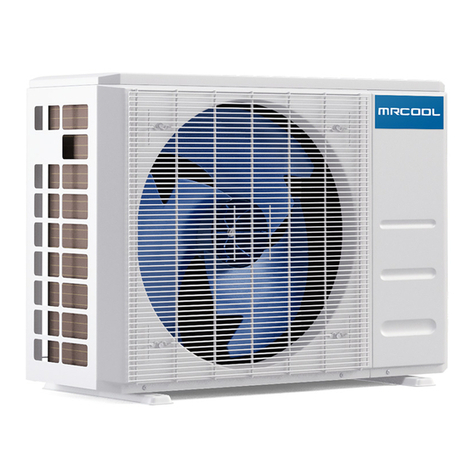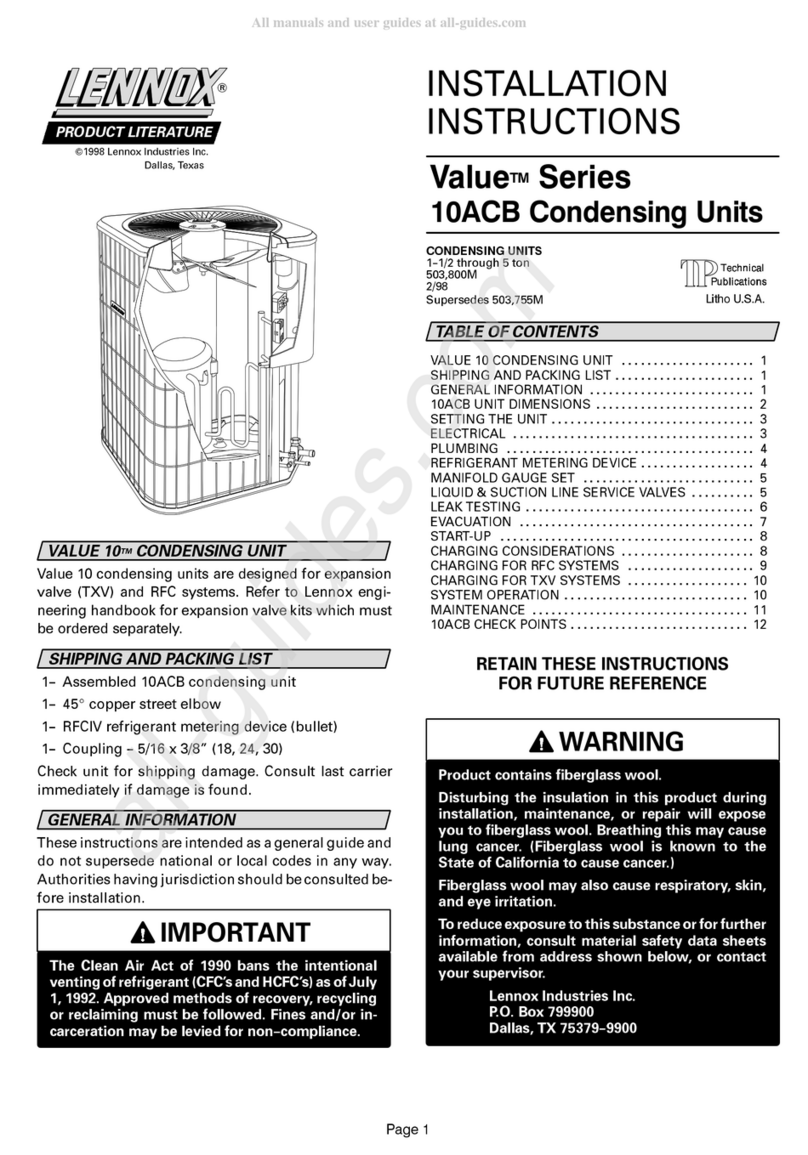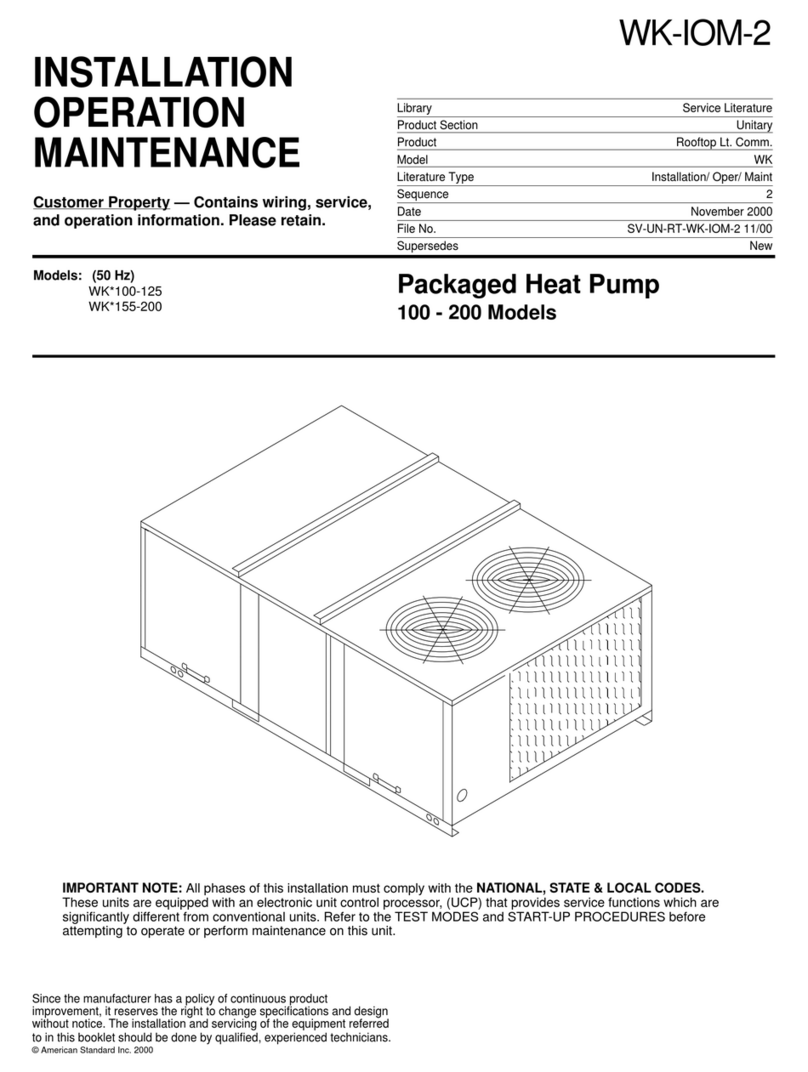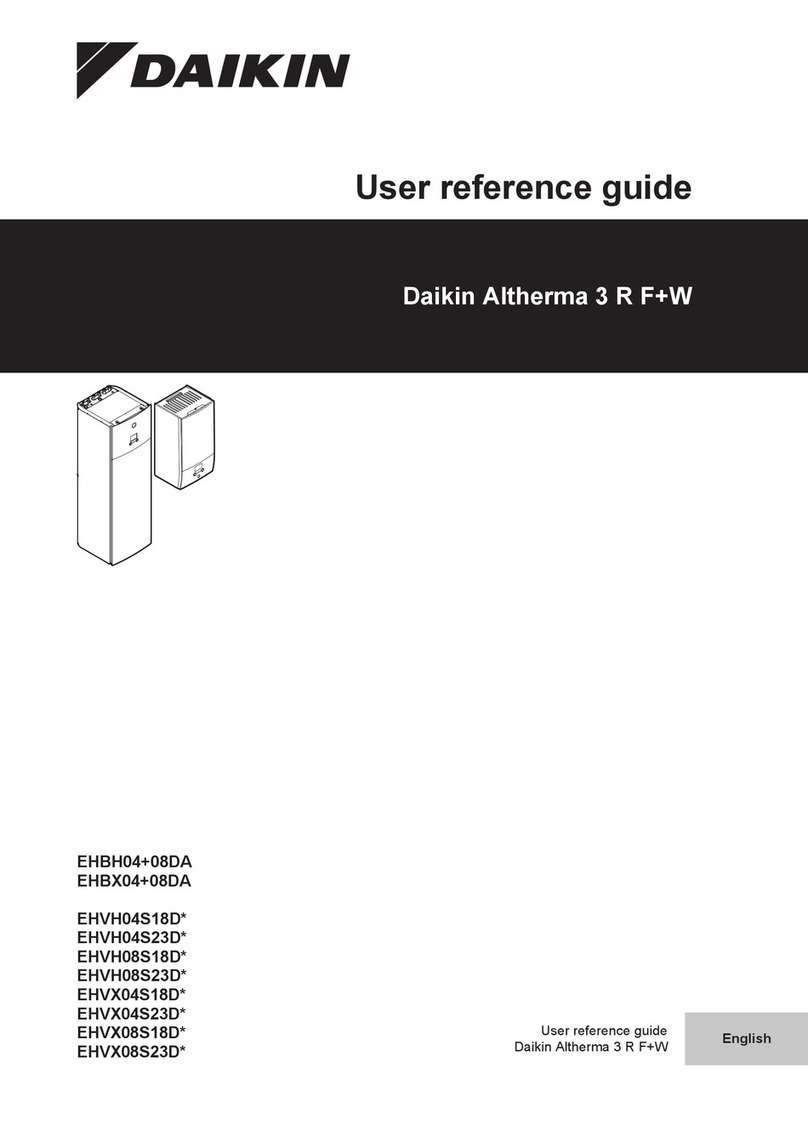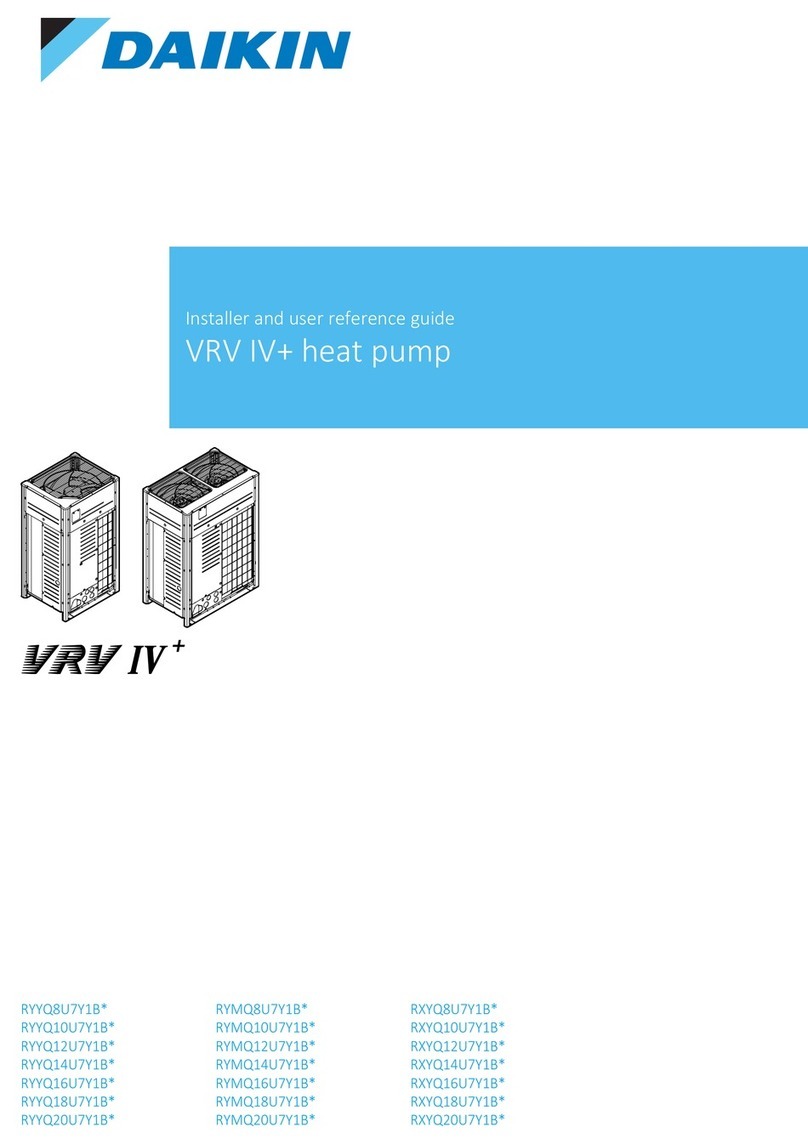
Warnings
Installation, use and maintenance manual – GAHP A 5
III
and understanding the dangers inherent in it. Children
should not play with the appliance.
Hazardous situations
Do not start the appliance in hazardous conditions, such
as: gas smell, problems with the plumbing/electrical/gas
system, parts of the appliance under water or damaged,
malfunctioning, disabling or bypassing control and safe-
ty devices.
In case of danger, request intervention by qualied per-
sonnel.
In case of danger, switch o the electrical power and gas
supplies only if this can be done in total safety.
Gas component tightness
Before performing any operation on gas ducting compo-
nents, close the gas valve.
Upon completing any procedure, perform the tightness
test according to regulations in force.
Gas smell
If you smell gas:
Do not use electrical devices such as telephones, mul-
timeters or other equipment that may cause sparks next
to the appliance.
Shut o the gas supply by turning the valve o.
Switch o the power supply via the external disconnect
switch in the power supply electrical panel.
Use a telephone away from the appliance to ask for inter-
vention from qualied personnel.
Poisoning
Ensure the ue gas ducts are tight and compliant with
the regulations in force.
Upon completing any procedure, ensure the tightness of
the components.
Moving parts
The appliance contains moving parts.
Do not remove guards during operation, and in any case
prior to disconnecting the power supply.
Burn hazard
The appliance contains very hot parts.
Do not open the appliance and do not touch internal
components before the appliance has cooled down.
Do not touch the ue gas exhaust before it has cooled
down.
Pressure vessels
The appliance has a sealed circuit classied as pres-
sure vessel, the tightness of which is tested by the
manufacturer.
Do not carry out any intervention on the sealed circuit or
on the appliance's valves.
Water-ammonia solution
The GAHP unit uses the ammonia-water absorption
cycle. The water-ammonia solution is contained in the
sealed circuit. The solution is harmful for health if it is
ingested, inhaled or comes in contact with the skin.
In the event of coolant leak keep away and disconnect
the power and gas supply (only if it is possible to do so
with no danger).
Ask for TAC intervention.
Electrocution hazard
Disconnect the electrical power supply before any oper-
ation on appliance components.
For electrical connections exclusively use compliant
components and according to the specications provid-
ed by the manufacturer.
Ensure the appliance cannot be accidentally switched
back on.
Earthing
Electrical safety depends on eective earthing system,
correctly connected to the appliance and installed ac-
cording to the regulations in force.
Distance from combustible or ammable materials
Do not deposit ammable materials (paper, diluents,
paints, etc.) near the appliance.
Limescale and corrosion
Depending on the chemical/physical properties of the
system water, limescale or corrosion may damage the
appliance (Paragraph 3.7
p.21
).
Check system sealing.
Avoid frequent top-ups.
Chloride concentration
The concentration of chlorides or free chlorine in the
system water must not exceed the values in Table
3.2
p.21
.
Aggressive substances in the air
Halogenated hydrocarbons containing chlorine and u-
orine compounds cause corrosion.The air of the installa-
tion site must be free from aggressive substances.
Acid ue gas condensate
Discharge the acid condensate of combustion ue gas in
compliance with current exhaust regulations.
Switching the appliance o
Disconnecting the power supply while the appliance
is running may cause permanent damage to internal
components.
Except in the case of danger, do not disconnect the pow-
er supply to switch o the appliance, but always and ex-
clusively act through the provided control device (DDC,
CCP/CCI or external request).
In the event of failure
Operations on internal components and repairs may
exclusively be carried out by a TAC, using only original
spare parts.
In the event of failure of the appliance and/or breakage






















